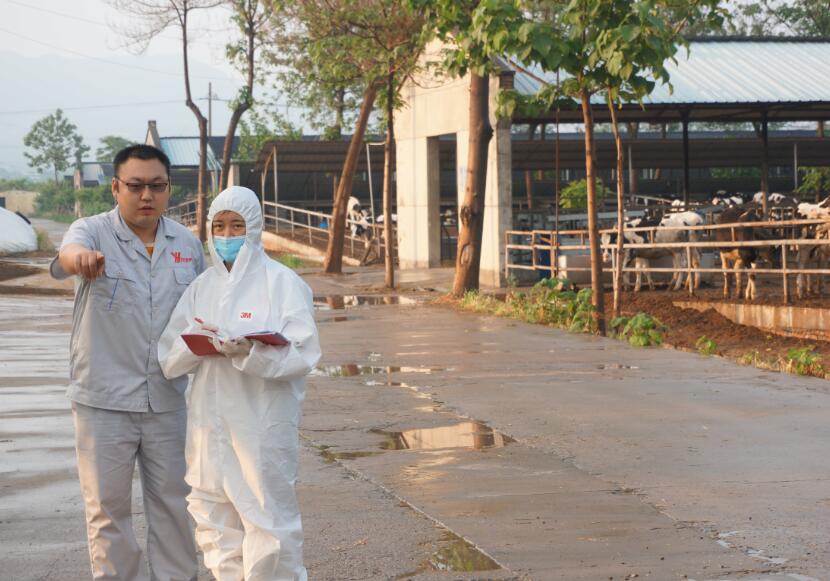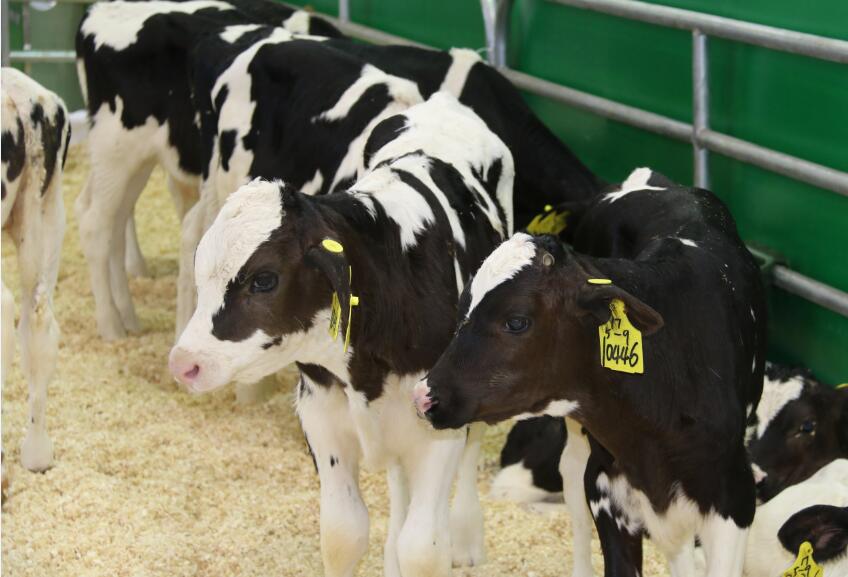
Jin Xin, major in animal husbandry and veterinary medicine, cattle age of 8 years. Visited a number of cattle farms, has rich practical experience in dairy farm production, and is familiar with SOP processes related to dairy cow nutrition and feeding. Now he is the technical specialist of Beijing Yahe Nutrition High tech Co., Ltd.
Specialized fields: TMR monitoring, dairy farm feeding management, dairy farm standardization management
According to the growth record of replacement cows, the height, bust and weight of cows at four stages of new born, 6-month-old, 13-month-old and first-born calf are compiled and analyzed with the help of EXECL. Evaluate the growth of the replacement cows and adjust the feeding plan.
There are two areas in the body curve chart of replacement cows in Figure 3.4. The top is the standard body height area chart, and the bottom is the standard weight area chart. It is reasonable for height and weight within the two areas; if to find out it is too high or too low, should analyze the deviation value and the proportion. If there are problems, timely measures should be taken to adjust the TMR to ensure the normal development of the replacement cows.
Weight and height are important reference indicators for measuring nutritional program and must be measured once a month. If they are not within the normal range, the feeding plan must be adjusted. Diet energy mainly affects body weight, and protein mainly affects body height. When conditions permit, the dairy farms can measure the performance of youth cows and heifer cows.
1. Bun high: Also known as body height. The highest point of the bun armor is perpendicular to the height of the ground. Measure with a Biltmore stick.
2. Bust: Make a vertical line at the posterior edge of the scapula and measure it with a tape for a circle. The tightness is determined by the ability to insert the index finger and middle finger up and down.
3. Body length-1: the distance from the shoulder to the end of the ischium. Use a tape or a Biltmore stick.
4. Body length-2: the horizontal distance from the shoulder to the vertical line of the posterior edge of the ischial end. Measure with a Biltmore stick.
5. Back height: the height of trailing edge for spinous process of the last thoracic perpendicular to the ground. Measure with a Biltmore stick
6. Waist height: also known as the hip cross height. The height of the center for the two waist angles (that is, the hip cross) perpendicular to the ground. Measure with a Biltmore stick.
7. buttock height: the height of the highest point of the sacrum perpendicular to the ground. Measure with a Biltmore stick.
8. Chest depth: the vertical distance from the bunny carapace to the thoracic spine behind the shoulder blades. Measure with a Biltmore stick.
9. Chest width: the maximum distance between the left and right sixth ribs, that is, the width of the widest part of the chest at the trailing edge of the shoulder blade. Measure with a Biltmore stick or a round gauge.





